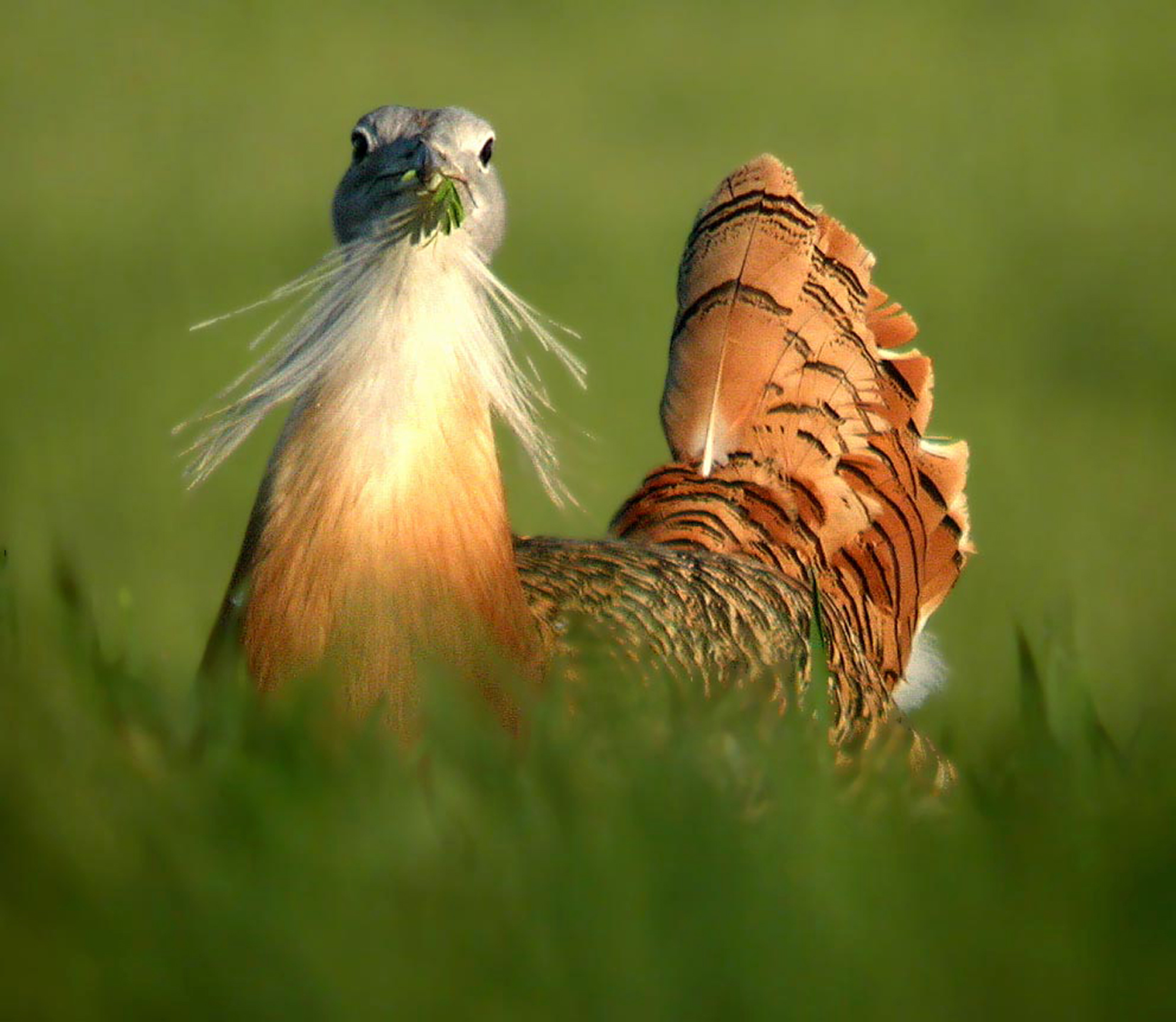

In the wild, the great bustard (Otis tarda) is pretty hard to miss. Some can weigh as much as 30 pounds and its feathers are uniquely colored. They are the heaviest birds living today that can fly and the Moroccan population is listed as classified as vulnerable on the International Union for Conservation of Nature’s Red List of Threatened Species. They breed on grasslands from western Europe and northwest Africa to central and eastern Asia, with roughly 70 percent living on the Iberian peninsula.
These great big birds also might actively try to find two plants that can kill pathogens, making them a rare example of a bird using plants to fight disease.
[Related: Can birds smell? This ornithologist is debunking a long-standing myth.]
A new study published yesterday in the journal Frontiers in Ecology and Evolution details this self-medication in great bustards.
“Great bustards seek out two species of weeds that are also used by humans in traditional medicine,” co-author Azucena Gonzalez-Coloma, a researcher at the Institute of Agricultural Sciences in Madrid, said in a statement. “We show that both contain antiprotozoal and nematicidal (ie, worm-killing) compounds, while the second also contains antifungal agents.”
Self-medication is suspected to occur in a range of animals from fruit flies to macaws to elks, but tricky to prove beyond doubt in wild animals since comparing between control and experimental treatments with the plants is nearly impossible. “And double-blind trials or dose-effect studies, obligatory steps in human or veterinary medicine, are obviously impossible in wild animals,” cautioned Luis M. Bautista-Sopelana, a staff scientist at the National Museum of Natural Sciences in Madrid and one of the study’s authors.
The female birds typically stay within the home range from where they were hatched, while revisiting the same lek site year after year. Lek breeding is when male birds gather at chosen sites to put on a bit of a show for females, who select their mate based on his appearance and the quality of his performance.
However, by staying and pooping in the same area for long periods of time, the female birds risk re-infecting themselves with illnesses. For males, the exceptional stamina that they need during mating season likely causes their immune systems to weaken.
“In theory, both sexes of great bustards might benefit from seeking out medicinal plants in the mating season when sexually transmitted diseases are common—while males that use plants with compounds active against diseases might appear more healthy, vigorous, and attractive to females,” said Gonzalez-Coloma.
[Related: These new interactive maps reveal the incredible global journeys of migrating birds.]
The team collected a total of 623 droppings from female and male great bustards, including 178 during the mating season in April 2022. Using a microscope, they counted the recognizable remains in the poop, such as tissue from stems, leaves, and flowers, of 90 plant species that are known to be on the bustards’ menu.
They found that two species are eaten by great bustards more often than expected: corn poppies (Papaver rhoeas) and purple viper’s bugloss (Echium plantagineum). Cattle in the area avoid eating corn poppies, but they are used in traditional medicine as a pain reliever, sedative, and even an immunity booster. It also has multiple fatty acids. Purple viper’s bugloss is toxic for humans and cattle if eaten in large amounts, but it is rich in edible oils that up its nutritional value.
“Great bustards select corn poppies and purple viper’s bugloss mainly in the mating season, in April, when their energy expenditure is greatest. And males, who during these months spend much of their time and energy budgets on sexual display, prefer them more than females,” said Bautista-Sopelana.

While the study proposes that great bustards are excellent candidates for birds that seek out specific plants to use as medicine, more research is needed to understand how this works.
“The ultimate proof of self-medication requires experimental protocols developed in the biomedical, veterinary, and pharmacological sciences,” said Bautista-Sopelana. “Until then, we continue with our fieldwork. For example, quantifying the prevalence of remains of corn poppies and purple viper’s bugloss and pathogens in fecal droppings across different populations of great bustards could falsify our hypothesis of self-medication in this species.”
